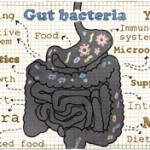Germy doorknobs and droplets of raw chicken juice are both known sources of microbes in the home. However, new research indicates that while we often focus on the ways in which homes might contaminate us, in reality, our homes are primarily colonized by us. In fact, from the moment we move into a home, the home not only begins to reflect our lifestyle and design tastes, but also our microbiome.
Most of us spend more time in our homes than we do outdoors. This observation has led scientists to wonder about the relationship between the human microbiome and the home microbiome. As it turns out, this question hasn’t really been asked before now.
Simon Lax, a graduate student in the Department of Ecology and Evolution at the University of Chicago, and colleagues addressed this issue in their paper published in the Aug. 29, 2014 issue of Science.1 The paper reports on results from the team’s Home Microbiome Project research.
In the paper, Lax et al write that they “microbially monitored seven ethnically diverse U.S. families and their homes over six weeks by sampling their skin- and home-surface bacterial communities. Eighteen participants were trained in the collection of 1,625 microbial samples from body and home sites over a four- to six-week period from 10 houses, three dogs and one cat. For three families, samples were taken immediately before and after moving to a new home.” The researchers discovered that humans who share a home are more microbially similar than humans who don’t share a home.
The team identified 21,997 distinct species of bacteria, referring to them as operational taxonomic units (OTUs), as well as 564 abundant OTUs.
When they analyzed microbial samples from different sites within the homes, they found that samples from the same home (doorknob and kitchen counter, for example) were more similar to each other than samples taken from the same site in different homes (kitchen counter from one home vs. kitchen counter from another home, for example). Moreover, each surface type had its own distinctive microbial community volatility.
Analyzing the types of bacteria found in various samples revealed that Firmicutes and Actinobacteria were more likely to be found in human samples. Proteobacteria were more likely to be found in home and pet samples, and Bacteroidetes were most abundant in pets.
The investigators created a microbial fingerprint for each family, as well as a microbial fingerprint for each home. They then compared the fingerprints using a Bayesian technique known as SourceTracker and found that each house could be easily matched to its family via microbial analysis. In particular, floor samples were highly diagnostic of the family living in the home. They also found that the draft genomes of potential pathogens found on kitchen counters could be matched to those on occupants’ hands.


